25 Types of Citrus Fruits
When you buy through our links, The Breslin may earn an affiliate commission. Learn more
By consuming different types of citrus fruits, you will gain many health benefits. But, you only know about lime and lemon and have no idea about the others. Never mind! You have me right here next to your side.
This article will help you better understand citrus fruits, their varieties, and some bonus tips to consume your fruits the right way. Besides, I have also summarized my frequently used recipes for you to try.
So, what do you say about my invitation? If the answer is yes, then scroll down and begin to gain!

Overview About Citrus Fruit
Citrus fruit is a variety of fruit with a thick outer rind and various pulp on the inside. It has core flesh divided into segments by thin layers. While citrus fruit’s rind is full of aromatic oils, its segments of the flesh are full of healthy juice.
You will feel three out of five main flavors when eating citrus fruits, including sweetness, sourness, and bitterness. The flavor will be different based on the types of citrus fruits you taste. Some will be mainly sour like limes, and some will be some kind of sweet like grapefruits.
Although each citrus fruit will have different nutrients, they all have some main health benefits like strengthening your immune and heart systems. Besides, some of them also have specific benefits, such as helping reduce the risk of kidney stones.
To better understand each, here comes the list!
Explore some of the texture and taste of several popular citrus fruits!
3 Original Citrus Fruits From The Ancient Time
Considered original fruits, citron, pomelo, and mandarin orange have been fundamental varieties for a few thousand years. People hybridize three ancestral varieties in the genus Citrus into modern ones with high commercial values, such as limes, lemons, and oranges.
Then, what special characteristics will the three of them have? Let’s figure it out together!
1. Citrons
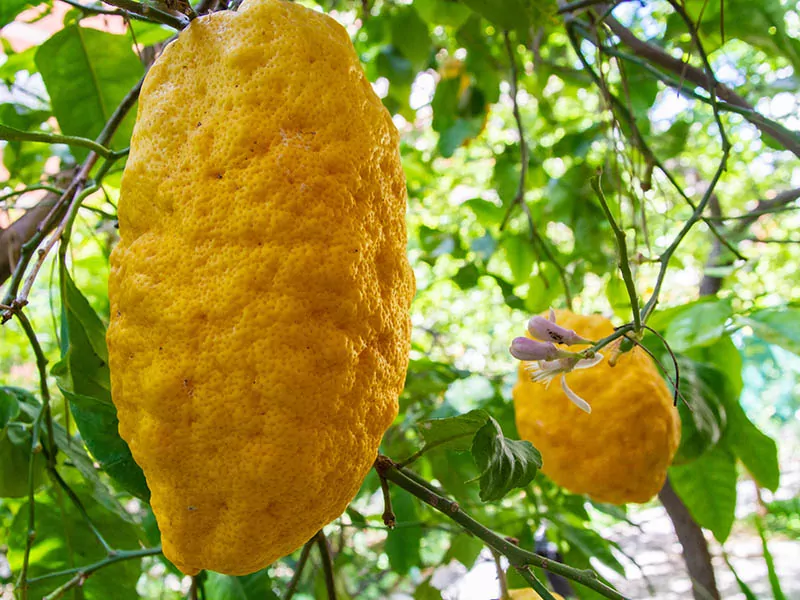
Citrons are native to India, specifically in the valley regions of the Eastern Himalayas. They have various shapes, but mostly oblong or oval, which are about 5 to 6 inches long. Especially, their rinds can be either rough or smooth even though the fruits are on the same branch of a tree.
Usually, citrons’ rind is thick and has changed to yellow when fully ripe. Citrons are very fleshy but not juicy as their hybrid species like lemons and limes. When you bite the fruit, you will taste something sweet mixed with a savory flavor.
In citron, there are many essential antioxidants and flavonoids, which help reduce the risk of formation of cancer cells and strengthen your immunity to various types of cancer. Also, citron has anti-inflammatory qualities that provide natural headache relief.
With their disadvantages compared to hybrid citrus fruits, citron isn’t very often used in cooking. Citron has a thick white rind, which takes up most of the fruit. Thus, its pulp is smaller, drier, and less valuable compared to others.
Instead, people treat them as medicine, perfumes, or for religious purposes in Asian countries. Specifically, citron is a highly regarded fruit in Jewish religious rites, especially during Sukkot.
2. Pomelos
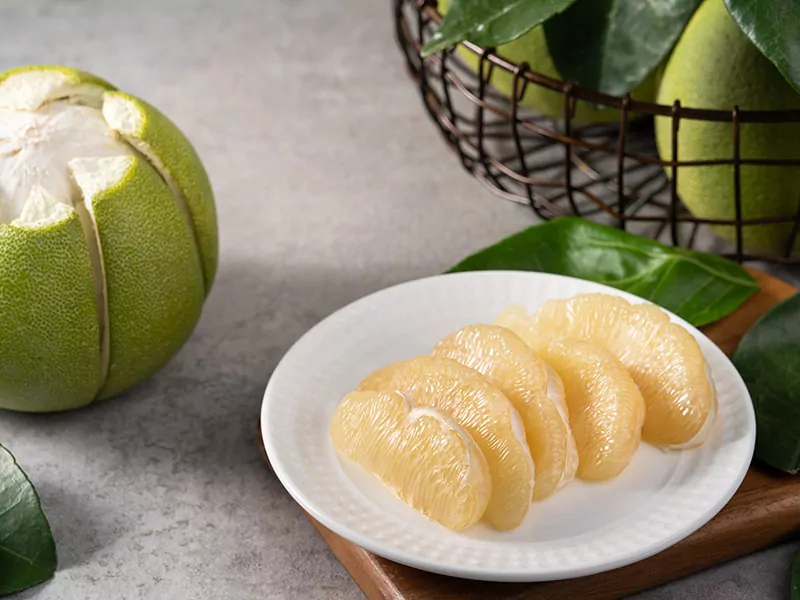
Native to Southeastern Asia and Malaysia, pomelo was first brought to the United States in the 17th century. However, pomelo is not a popular fruit among Americans. Instead, it is more welcome than in China, where the fruit represents good luck.
Pomelo has a large shape of either round or oval. Its rind is textured thick and ranges from green to yellow color during the ripe life. Inside the green and yellow outer shell is a white-yellow or bright pink pulpy core.
In the core, there are many segments containing juicy pulp and sometimes seeds to some varieties of pomelo. When you taste one segment of its ripe flesh, you will feel the sweetness in your tongue without much bitterness or sourness.
Besides antioxidants, pomelo contains lots of vitamins and minerals, which make it an extremely healthy fruit to add to your diet. Also, by having pomelo daily, you will achieve your weight loss goal due to its high content of dietary fiber.
Thanks to the pomelo’s wonderful benefits, people often treat it as a necessary fruit in meals or a key ingredient in baking. Chinese people also use its leaves for bathing, which they call washing away the unlucky things from your body.
Check out this pomelo fruit experience!
3. Mandarin Oranges
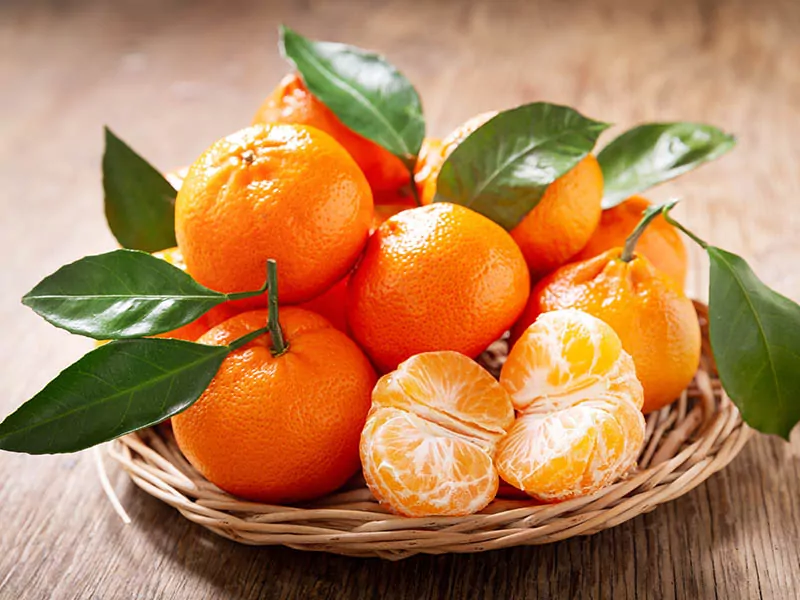
Believed to originate from Southeastern Asia and the Philippines, the mandarin orange is a widely grown tree in Japan, South China, India, and the East Indies. In the mid-19th century, people introduced the fruit to America, where it quickly grew in popularity.
Mandarin orange is oblate and has bright orange or red-orange peel which is, unlike other citrus fruits, very thin and loose when ripe. Therefore, mandarin oranges are hard to store under cold temperatures and ship to other places for sale.
If you have the flesh of mandarin orange, you will taste more of the sweet and vanilla flavor. Besides, the fragrance of mandarin is also very pleasing to smell. Thus, people usually make perfumes and baking ingredients from mandarin oranges.
You can gain a lot of benefits from eating mandarin oranges. It consists of many powerful vitamins, such as vitamin A, vitamin B, and vitamin C, preventing you from cramps and infections. Plus, it also boosts the health of your skin.
The Best Citrus Fruits For Your Savory Dish
Now, you know the ancestors of citrus species. Next, I will introduce you to a series of citrus fruits with a sour taste that will go well with your salad. Please look forward to it!
4. Limes
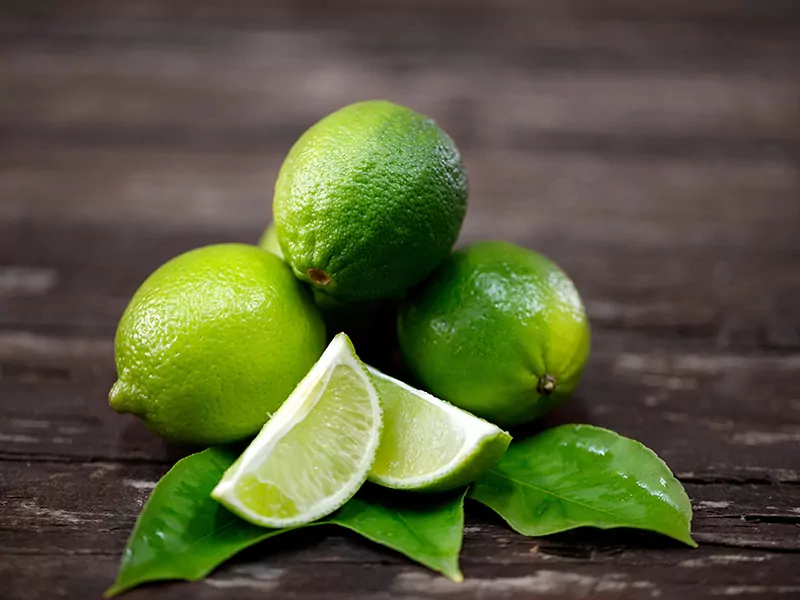
The origin of wild limes is from the Indonesian archipelago or neighboring Asia mainland. When Christopher Columbus took citrus seeds to the New World on his second journey in 1493, limes became widely grown in what would become the United States.
Limes have a small and round shape with a green peel covering. The limes’ skin is very thin and oily, which is tight to its core fruit. Thus, when squeezing the limes, you should be careful so that the oil does not tear out and alter your juice.
Having an acid component, limes are sour with a little hint of sweetness. If you serve them as a whole, there will be an addition of bitterness from their oily skin. Hence, people rarely use them wholly like oranges.
Although limes have a small size, this fruit does contain loads of nutrients, namely antioxidants and vitamin C. Regular consumption of this fruit will help you lower high blood pressure and prevent severe colds.
5. Lemons
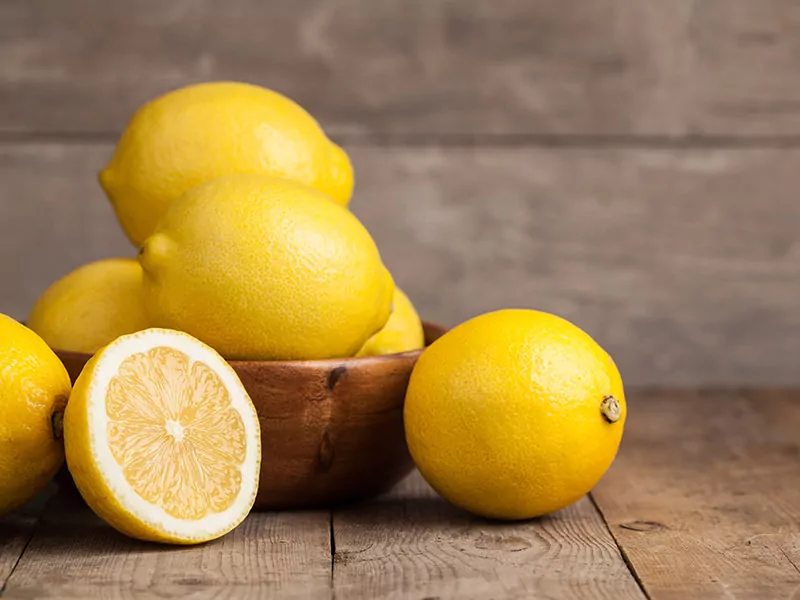
Lemons originated in north-western India before they were introduced to southern Italy in 200 AD. Thanks to the journey of Christopher Columbus in the 15th century, lemons traveled to America and have become its big crops since then.
Lemons are oval-shaped fruit with a low apical nipple. They have a yellow rind and thick peels that vary in different types. Inside the peel, there is a white and tasteless spongy part separating the peel from juicy flesh. Usually, the fruits have small seeds, but some are also seedless.
When you cut the lemons in half, there is an enchanting aroma wafted into the air. They have an acidic, sour, and harsh taste in their flavor profile. Therefore, people often use lemons as an additive to their dishes instead of eating them rawly.
Many manufacturers also take advantage of lemons’ fragrance. They make the extracted oil to use in perfumes, soaps, and flavorings, making it a crucial product in the aromatherapy market.
How different are limes and lemons? Figure it now!
6. Calamansi (Philippine Limes)
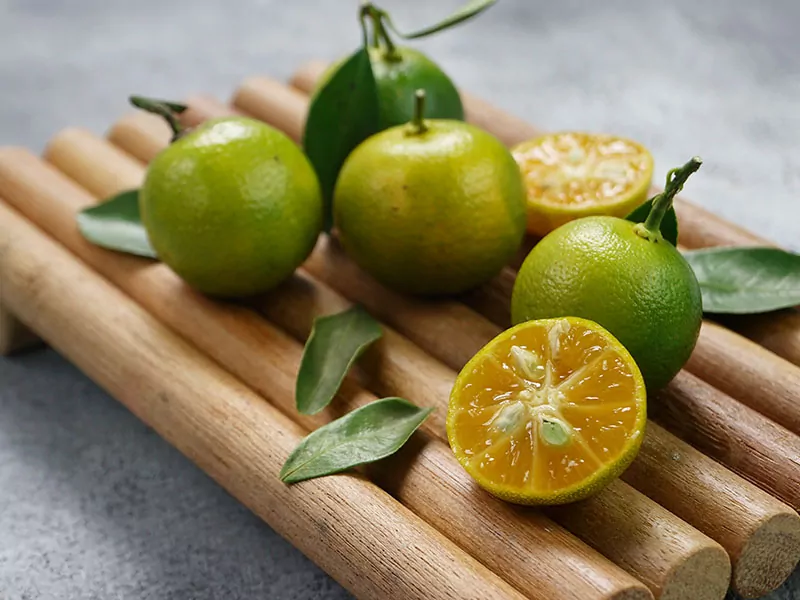
Calamansi, known as Philippine limes, are native to the Philippines, Indonesia, China, and Taiwan. The fruit is extremely small, which is only from 0.98 to 1.38 inches in diameter. When ripe, calamansi has an orange pulp and juice covered with a thin orange peel.
Although the fruit is small, you should not underestimate its flavor. Calamansi has an authentic tart taste combining the flavors of limes, lemons, and oranges. Thus, just squeeze juice from it into your dish, and your food will be magically different!
In particular, you can use calamansi for everything. From juice and cake to flavoring for your main course, everything is possible! If you want some garnishes, calamansi can be the one, too.
By having a cup of calamansi juice, you will have better health. Calamansi contains lots of pectins, a soluble fiber helping you lower your cholesterol and prevent heart diseases. Besides, the antibacterial qualities in calamansi also help you reduce your body odor.
7. Kaffir Limes
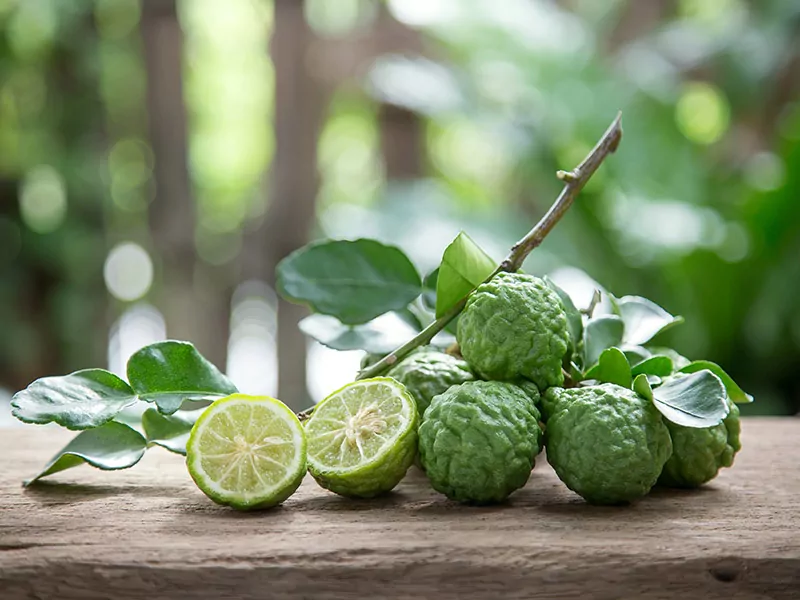
Kaffir limes are citrus fruits native to Southeast Asia and the Netherlands. Unlike limes, the fruit has a bumpy skin with dark green color. Besides, people rarely use the juice and flesh of Kaffir limes due to their lack of water. Instead, they are more likely to utilize their leaves and rinds.
While the rind of Kaffir limes is somewhat sour-tasting, its leaves have a spicy and floral flavor of citrus, which is lighter than curry leaves or bay leaves. Hence, people usually use the sour rind to make cake or sauce when they prefer using leaves for cooking curry dishes.
Not only do Kaffir limes taste great, but they also can do wonders to your health. You can use their leaves directly onto the gums for oral and gum care. Also, you can use kaffir limes for your aromatherapy. If you feel anxiety, spend time healing with extracted oil of Kaffir limes.
8. Rangpur Limes
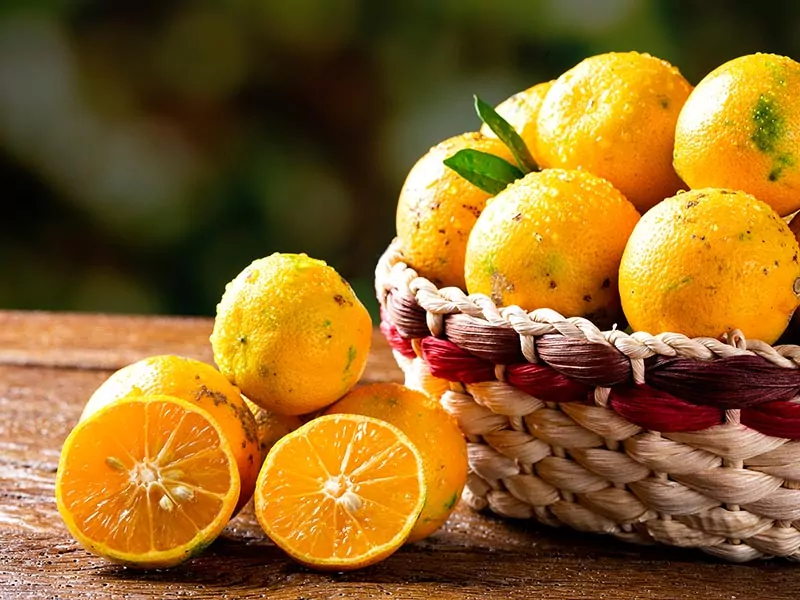
Rangpur limes are a necessary cooking ingredient in India, where they came from. Although named after limes, they aren’t related to limes. Rangpur limes are hybrid fruits between lemon and mandarin. That’s why rangpur limes have characteristics inherited from both species.
Rangpur limes are small and mostly have the shape of a sphere or flat. Like mandarin, the fruit has a bright orange rind and flesh, which is easy to peel and segment. Besides, like lemon, rangpur limes’ juice is extremely sour but with a strong floral fragrance.
For that reason, you can use rangpur limes to make jam for your breakfast, curd for your baking, or even use them rawly for your dish. In case you want to use them in your drink, gin is the best in town. So, after all, it’s all your choice!
Let’s grow a rangpur lime tree!
9. Finger Limes
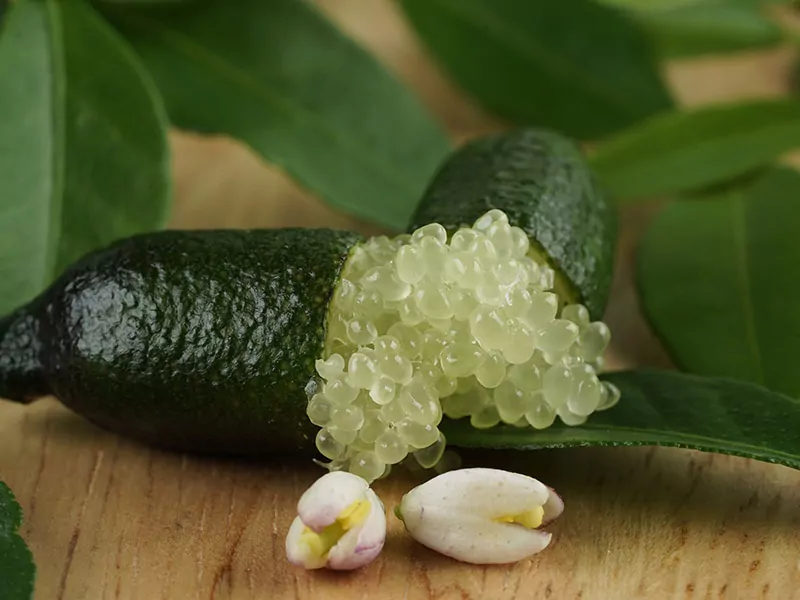
As its taxonomic name says, finger limes are from the coastal border regions between Queensland and New South Wales in Australia. Finger limes have a cylindrical shape about three inches in size. The fruit has a variety of colors, such as pink and green.
Unlike other types of limes, finger limes have hundreds of tiny and fragrant vesicles called citrus caviar because of their shape and premium price. When you mold all the tiny pearls into your mouth, you will taste a mix of lemony, citrus savoriness and a subtly bitter flavor.
Like other citrus fruits, finger limes are loaded with many vitamins and antioxidants. Particularly, there is vitamin C for delaying your skin aging, vitamin E for preventing heart and nervous diseases, and potassium for lowering your blood pressure.
10. Persian Limes
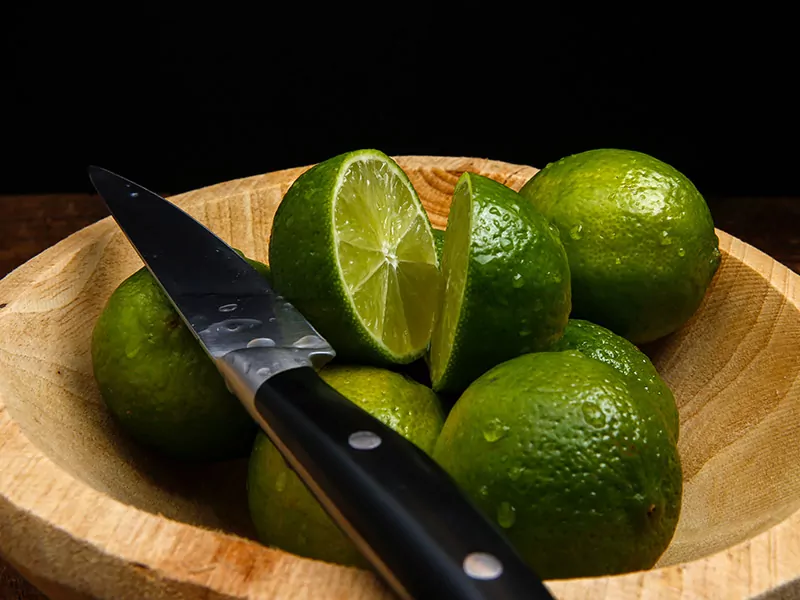
Persian limes, known as seedless limes, are a triploid hybrid between key limes and lemons. With the advantage of being seedless and rich in water, this fruit ranks as a popular citrus fruit in the global market.
Compared to key limes, Persian limes are larger with thicker skin, ensuring water retention and longer shelf life of the fruit. Besides, the combination with lemon also removed the bitterness of key limes from this hybrid, making them even more satisfying to diners.
Due to the juiciness of Persian limes, you can use them as a drink for hot days. Not only will a glass of lime water quench your thirst but it’s also packed with vitamin C and antioxidants that boost your immune system and ward off common diseases.
11. Meyer Lemons
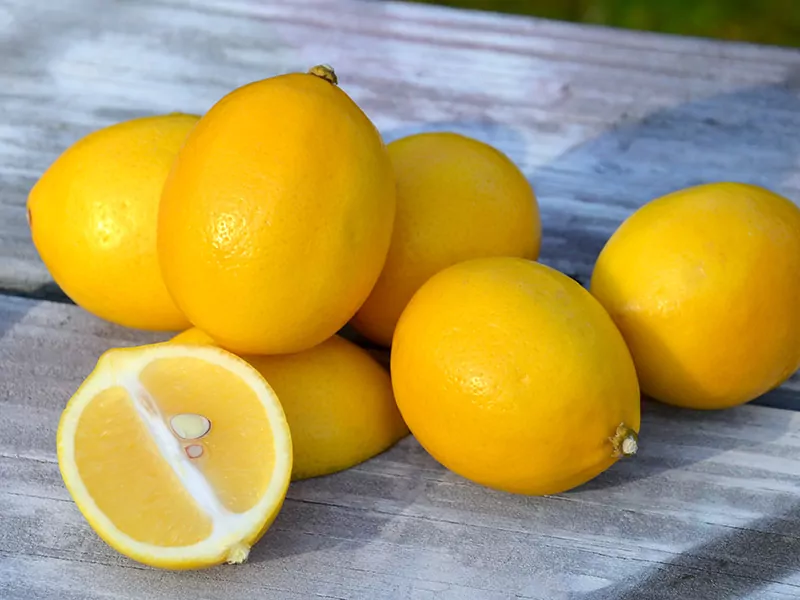
Meyer lemons are native to China. They were originally decorative houseplants. By the early 20th century, Mr. Frank Nicholas Meyer found the fruit and brought it back to the United States. The plant soon rose in fame, and today, it is a must-have ingredient in many kitchens.
Regarding their appearance, Meyer lemons have the same size as regular lemons, or sometimes even smaller. They have a smooth and thin yellow rind, which will turn to almost orange when ripe.
With thin peel, you can use Meyer lemon as a whole for your cooking recipes. Compared to regular lemons, the flesh and juice of Meyer lemon are sweeter, which can be for raw uses or cooked. Thus, the fruit’s price is also rather high, possibly twice as expensive as regular varieties.
Check out the optimal way to grow Meyer lemon trees!
Some Delicate Citrus Fruits You Cannot Resist
Are you writing down all the savory citrus fruits for your salad? If yes, here comes the list of 9 delicate fruits you cannot resist! There will be lots of useful information for you. So, hold your pen tight and keep noting!
12. Sweet Limes
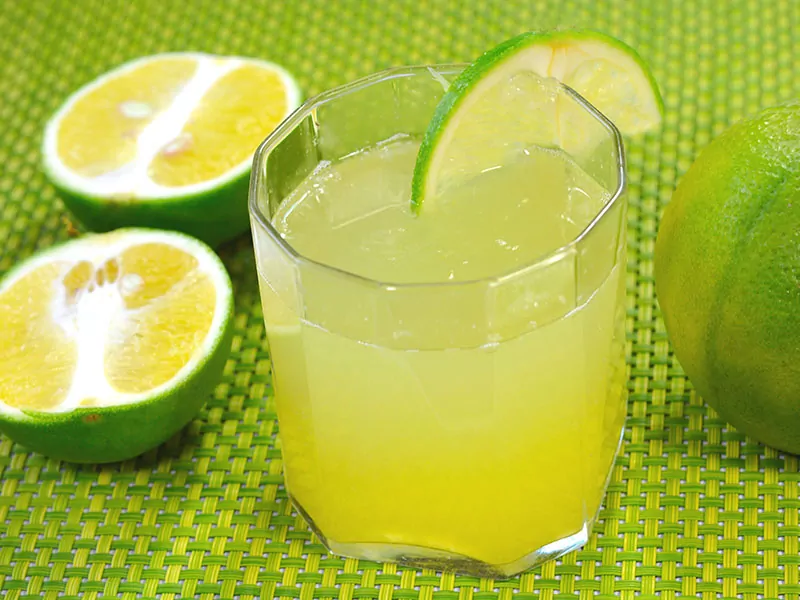
People brought sweet limes from India to America in 1904. Like other seeds brought from India, this type of citrus fruit is small and round with smooth thin skin. Its outer rind will change from yellow-green to yellow-orange during ripening.
In the core of sweet limes, there are some segments of flesh along with a small number of seeds. When ripe, the juicy fruit tastes sweet without any sour flavor.
It is fine to consume sweet limes as a fruit or juice since they do contain vitamin C, iron, and other minerals. These nutrients can offer you a healthy heart, glowing skin, and good vision.
13. Oranges
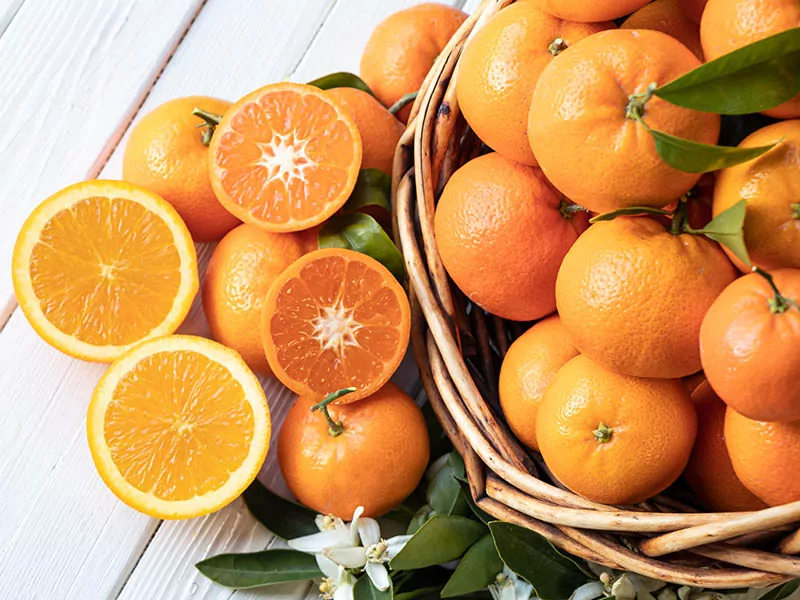
Oranges were derived from the tropical regions of Asia before spreading to the rest of the world. As the name suggests, oranges have a variety of orange colors, from reddish to yellowish. Their aromatic yet bitter-tasting skin is usually discarded.
Oranges’ flesh and peel are separated by the pith, a white fibrous material. Into the flesh, there are usually 10 segments divided, but sometimes it can be more or less according to fruit size and species. When the fruit is ripe, you can pull segments apart from the skin and enjoy it raw.
Like a slice of sunshine, oranges taste fresh, sweet, and sour at the same time, bringing you refreshing feelings. With their special taste, you can use oranges for cooking anything besides eating raw, such as cake, jam, or even put them as toppings for your main course.
In addition, to take advantage of the nutritional content and scent of oranges, some manufacturers also use them as ingredients for cosmetics and pharmaceuticals.
14. Bergamot Oranges
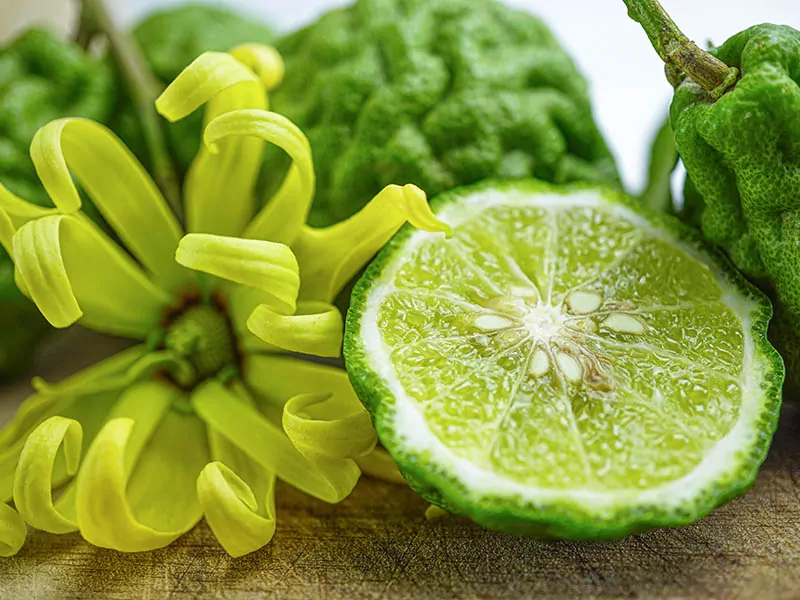
Native to Southern Italy, bergamot oranges are hybrid citrus combining sour orange and lemon or citron. Like oranges, bergamot oranges have rough greenish skin, which will turn yellow when mature. The bergamot oranges peel has outstanding oil reserves.
Into their core, there is light yellow flesh packed with juice and a few seeds. However, bergamot oranges are not comfortable to eat raw since their taste is extremely sour and bitter. Therefore, people mostly treat them as a key ingredient in the essential oil industry.
But, in case you still want to taste bergamot oranges, their taste will be better when candied, jammed, and in tea. That’s right; you did not hear it wrong! Bergamot oranges oil extracted from their peels is the main ingredient in a famous English tea called Earl Grey Tea.
Earl Grey Tea’s secret fragrance comes from bergamot oranges!
15. Kinnows
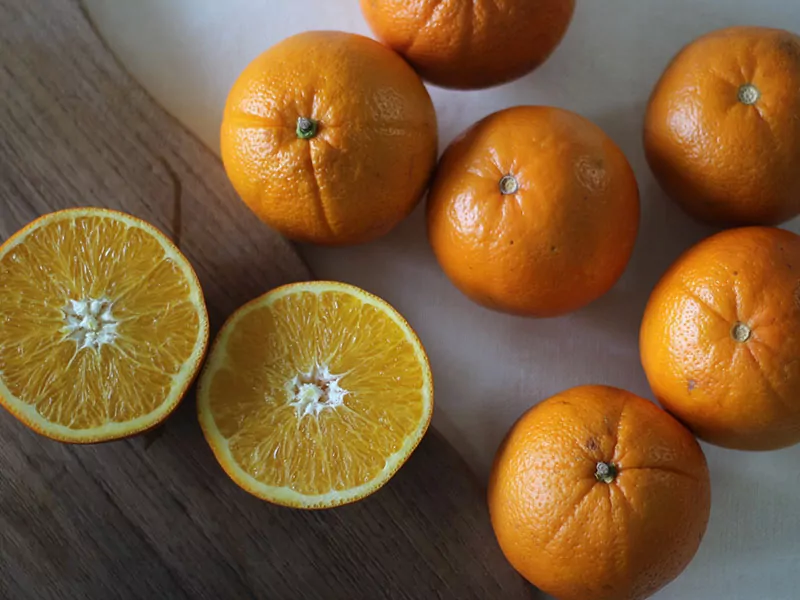
Kinnows were developed in California, the United States, from 1915 to 1935. However, they are currently the most widely grown mandarin species in Pakistan. America and India are also significant producers of fruit.
Kinnows are so similar to regular oranges that you may not be able to distinguish the two of them. But, if you pay closer attention, you can find some details to distinguish. Although they both have orange outer skin, kinnows’ skin is somewhat darker and thicker than oranges.
Regarding the taste, kinnows have a juicier texture and a more savory taste than oranges. However, their price is not as high as oranges because of their high yield.
Compared to other citrus fruits, kinnows have up to 2.5 times higher calcium, which will help strengthen your bone system if you consume them regularly. Also, people use the dried peel of kinnows as blackheads treatment in their herbal cosmetics.
16. Bitter Oranges
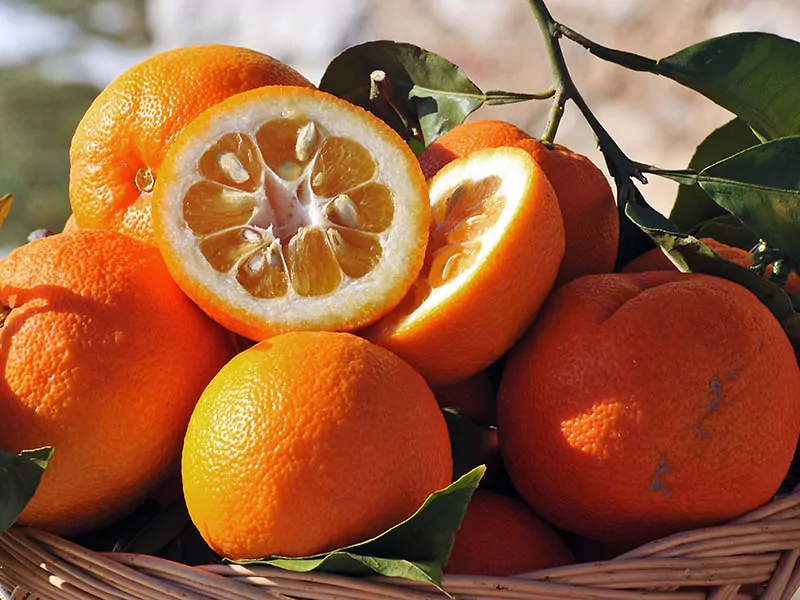
Derived from Southeast Asia, bitter oranges are now a widely cultivated fruit in many continents. Bitter oranges have thick and dimpled skin with yellowish-orange color. When ripe, they will change to a reddish-orange color and become fragrant.
Compared to sweet oranges, the flesh of bitter oranges is less juicy and tastes extremely bitter and tart. Therefore, people rarely eat them directly but use their juice and rind as flavorings added to their dishes.
With their high nutritional content, bitter oranges also have a big role in the traditional pharmaceutical industry. Particularly, traditional Chinese pharmacists often use bitter oranges in their medicine formula to cure digestive issues or for aromatherapies.
17. Yuzu
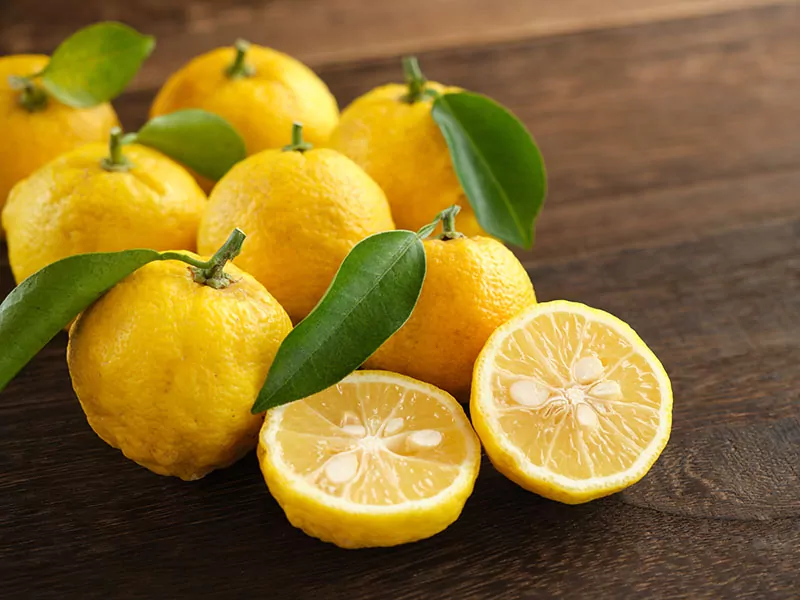
Although the real origin of yuzu is China, the fruit has become the traditional Japanese citrus fruit used in many dishes since old times.
With the size of a palm, common yuzu weighs about 120 to 130 grams. Yuzu’s skin is lumpy and thick. The Japanese believe the fruits should have a few black dots on the surface to be of high quality. The flesh of yuzu is soft and juicy with many big seeds in it.
Known as a flavoring for Japanese dishes, both the peel and flesh of yuzu are full of scent, which is a tart and authentic flavor mixed between grapefruits, lemons, and mandarin oranges. However, due to the more aromatic taste of peel, chefs prefer to add peel to their main course.
What does Japanese lemon taste like? Check it out!
18. Satsuma
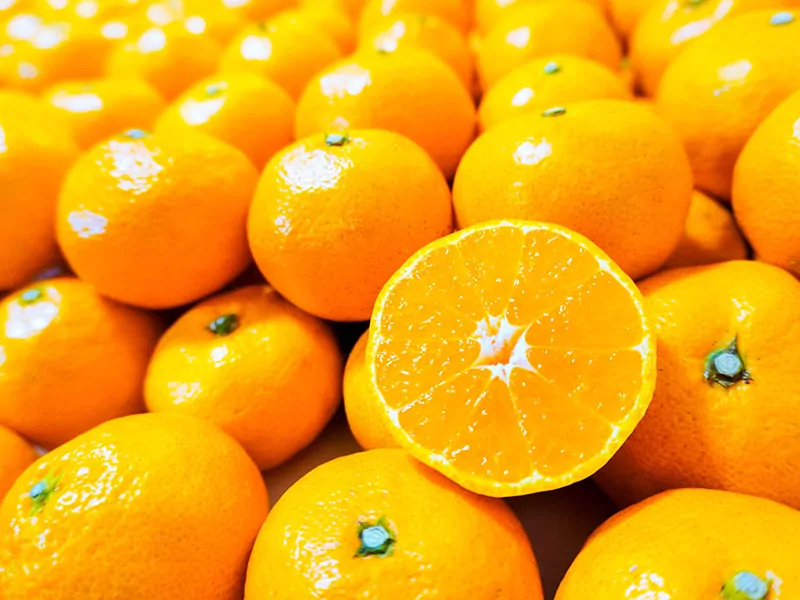
As the name sounds, a satsuma is a citrus fruit native to the former Satsuma province in Japan. Satsuma is famous for its loose and leather-like skin, which is very easy to peel compared to other citrus fruits. Also, it is the juiciest fruit in the Rutaceae family.
With the common shape of a medium sphere, satsuma often contains from 10 to 12 separable juicy segments. When you taste squeezed juice from its flesh, you will feel both sweet and tart flavors balanced at the same time. Thus, a satsuma is a preferable ingredient in dessert dishes.
Like other citrus fruits, it is no surprise that satsuma is loaded with vitamin C. Enjoying this fruit regularly will help strengthen your immunity and ward off colds and coughs.
19. Clementines
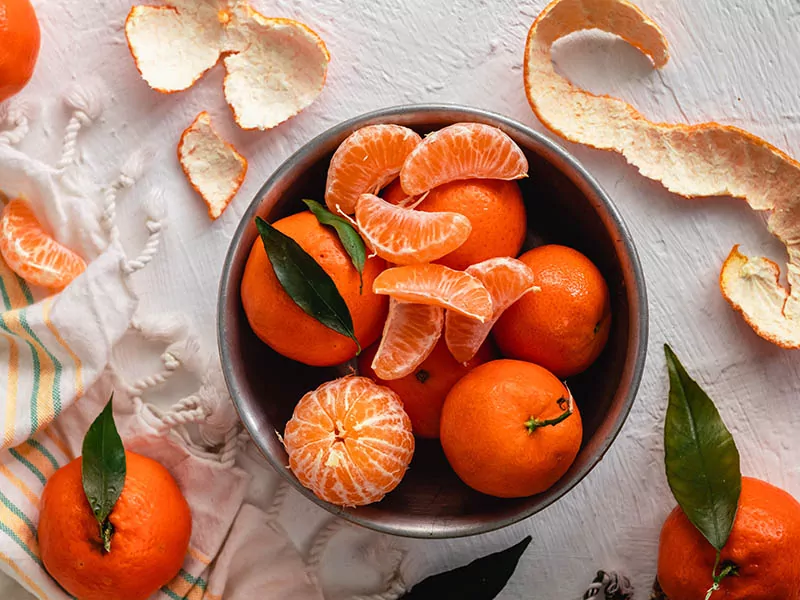
After being discovered by a French missionary named Clément Rodier in 1902, clementines were named after his name. By hybridizing the cross between a mandarin and sweet orange, the fruit has inherited traits from both species.
The outer rind of clementines is smooth and glossy with a deep orange color, which is easy to peel. Inside, there are 7 to 14 separated segments of flesh. Like sweet oranges, the fruit is sweet and juicy with a low content of acid.
When you eat clementine fruit, do not throw its peel yet. With an aromatic and sweet flavor, clementines’ peel can add a great taste to your poạched chicken or enhance the flavor in your cocktails and baked food.
20. Blood Oranges
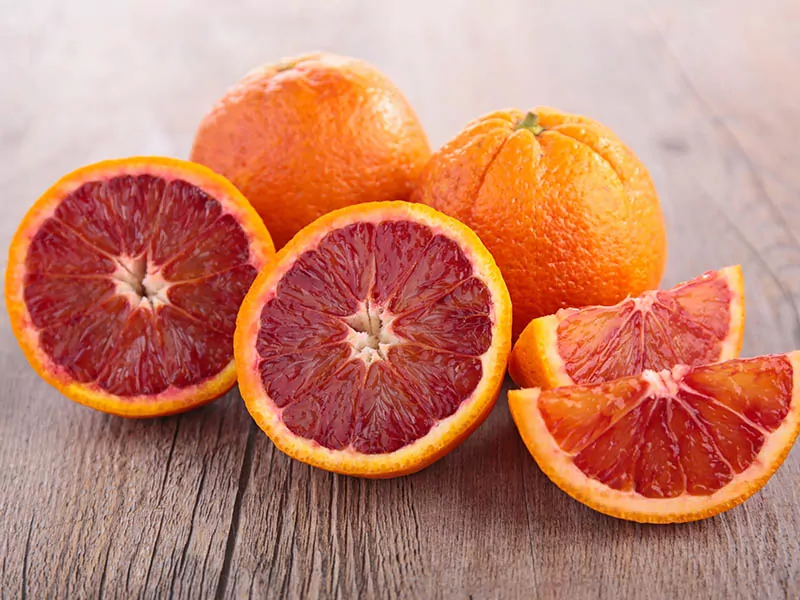
Blood oranges came from the Southern Mediterranean in the 18th century and have been widespread throughout the whole world. Although blood oranges have a similar outlook to other orange types, their interior and flavor are wholly different.
Inside, the fruit and flesh of blood oranges have a deep red color coming from anthocyanins, which are the pigments that blood oranges acquire on ripening. Thus, the red color will vary from red to fully deep red owing to the harvesting season.
Compared to other oranges, blood oranges taste more special and unique. Besides the citrusy tartness, blood oranges also taste like sweet raspberries with a floral undertone.
Therefore, people often use blood oranges to improve their dishes, such as salad, dessert, or even meat. Additionally, you can also use their peel for the preparation of alcoholic beverages, which will add a floral taste to your drinks.
What is it like to look inside a blood orange?
4 Exotic Citrus Fruits With Delicious Taste
Hold on! You are not at the end of the list yet. Four more citrus fruits are waiting for you from now on. Thus, stay tuned and keep reading!
21. Buddha’s Hands
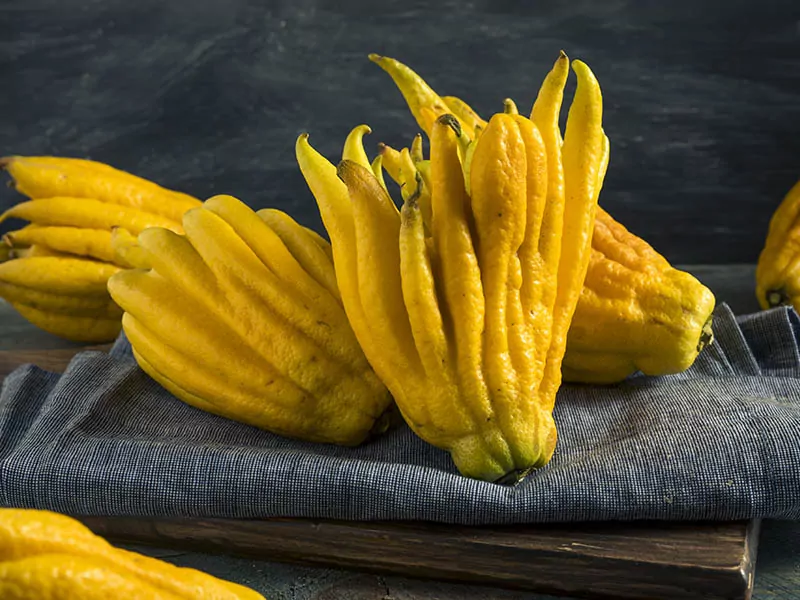
Budda’s hand is a citron fruit in Asia, which came from China and Northeast India. Like a lucky charm, Asian people would love to have it on big occasions like Lunar New Year and ancestor-worshiping ceremonies to pray for happiness and longevity.
To describe the fruit, Buddha’s hand has a similar fruit to a citron, but with many long segments growing from it, which create a shape like a multiple-fingered hand. That’s why people named the fruit Buddha’s hand.
Like other citron fruits, people mostly use its peel to zest on their foods and drinks, from pasta and salad to cocktails. In addition, you can also use Buddha’s hand as a fragrant arrangement in your house due to its sweet and lemony smells. All your choice!
Make your own candied Buddha’s hand, why not?
22. Kumquats
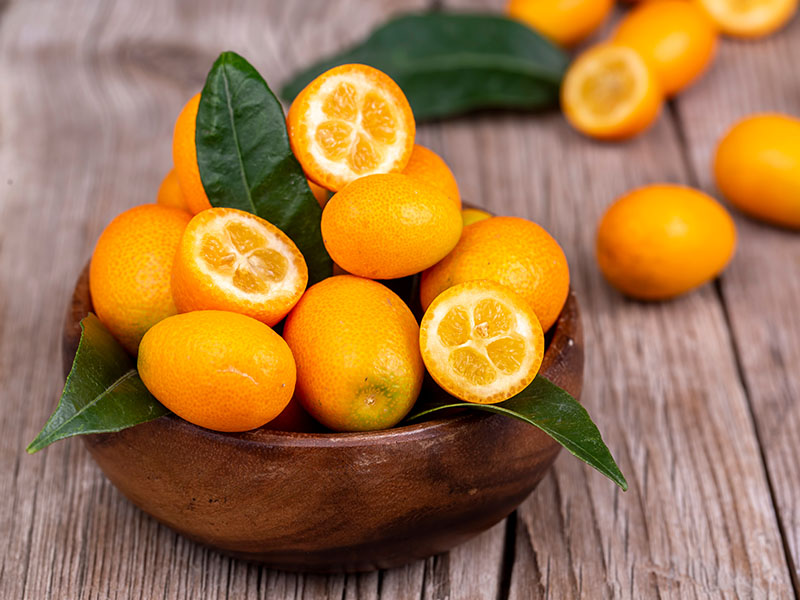
Native to Southern China, kumquats are a wide-grown tree throughout the subtropical regions. In their native country, Chinese people prefer to serve candied kumquats, while in America, people use branches of kumquats for Christmas decoration.
Having an olive-like look, kumquats are small citrus fruits with a round or oval form. In contrast to other citrus fruits, the orange edible peel of kumquat is the sweetest part of the fruit, while its juicy flesh has a prominent flavor of tartness.
Although kumquats are small, they are a big pack of nutrients. This type of citrus contains lots of vitamins and antioxidants, which safeguard your immune system from diseases. In addition, this fruit is also full of fiber and water, making it a friendly plant for your weight loss diet.
23. Ugli Fruits (Jamaican Tangelos)
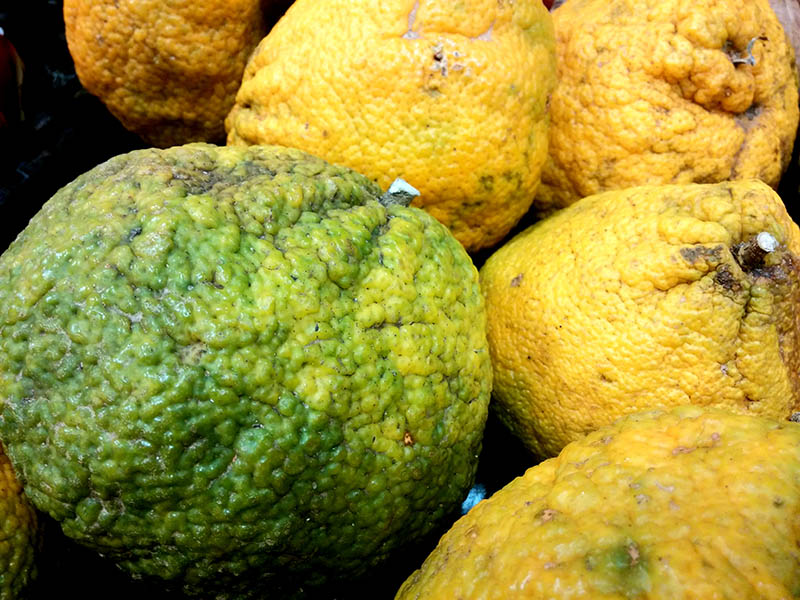
Ugli fruits are the wild citrus native to Jamaica. However, it wasn’t until 1934 did Jamaican tangelos get their name from the importers when people called them “an ugly fruit”.
As their name suggests, ugli fruits do not have an attractive appearance like their relatives. They have a teardrop-formed shape with a large size, even larger than grapefruits. The outer rind is thick and tough along with greenish-yellow color. All together create an unattractive outlook!
However, you should not judge the book by its cover. Contrary to its appearance, there is a distinctly unique taste in ugli fruits. They taste sweet, citrusy, and have a little tangy undertone, which has the same deliciousness as lemon flavor.
With the special taste, Jamaican people enjoy this type of citrus fruit very much. They squeeze the fruit for juice, add it to their salad bowl, or just simply cut it in half and enjoy it as a breakfast. So, if you want to taste this juicy fruit, just buy some and eat them raw!
How to eat ugli fruit and what it tastes like? All in here!
24. Limequats
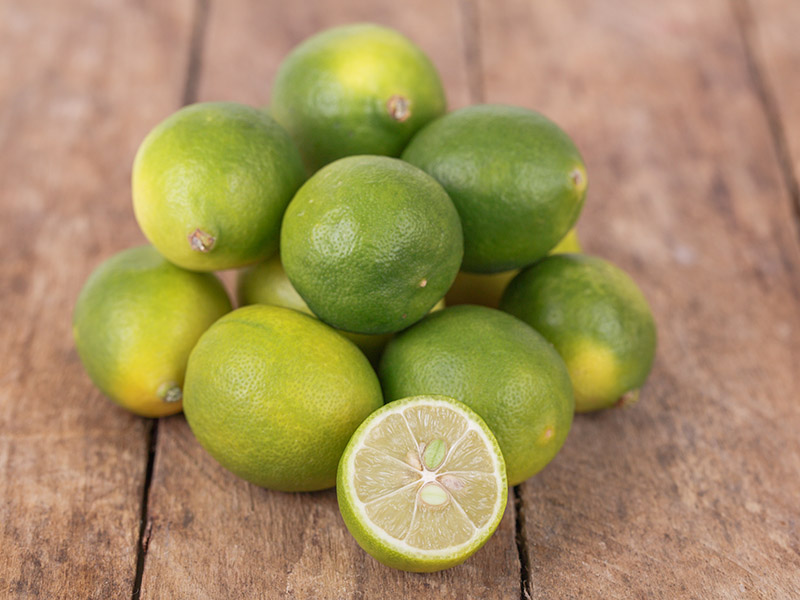
Originated in Florida, the United States, limequat is the result of research by an American agricultural botanist named Walter Tennyson Swingle in 1909. It is a hybrid of key limes and kumquats and inherits the properties of both types.
Like kumquats, limequats are small and oblong with smooth and thin skin. When ripe, the skin color will vary from green to yellow. Inside, the fruit has pulp with many seeds, the main reason for the bitter taste of your limequat.
Regarding the taste, limequat flesh has a sour and juicy main taste like key limes. In addition, it has a somewhat sweet and tasty rind like a kumquat. What a special combination!
Therefore, people often prefer limequats for putting in their cocktails and fruit salad. Moreover, many also enjoy them candied thanks to their tasty sweetness.
25. Grapefruits
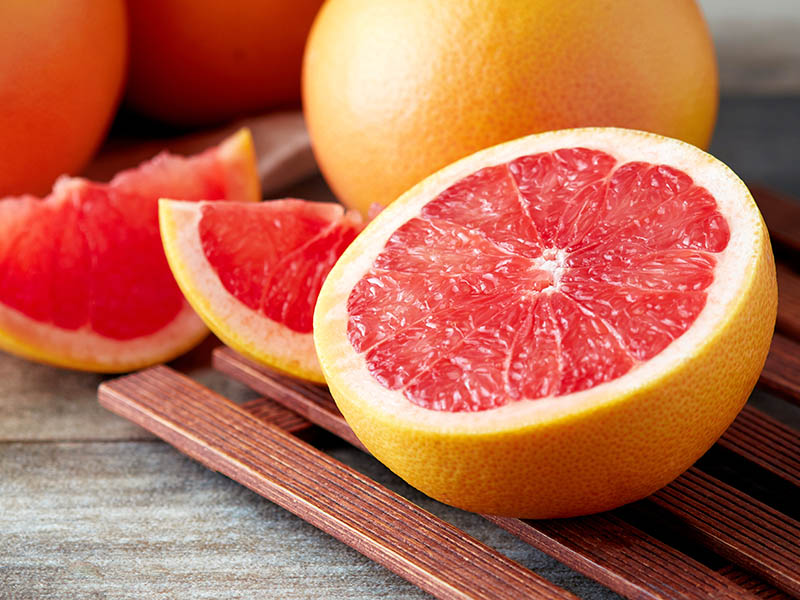
Grapefruits originated in Barbados and became a popular fruit in the islands of the West Indies. When it was brought to the American mainland, it became a favorite fruit for breakfast in many countries.
Grapefruits have a similar appearance to oranges, round but frequently have a flat bottom. The fruit peel is mostly yellow, sometimes hued with green or red depending on its variety.
Due to the existence of an antioxidant called lycopene, the flesh inside grapefruits has a distinct red color. However, there are also white and pink varieties, though they aren’t as sweet as the red one.
When you taste grapefruits, you will feel mostly the sweetness that comes before the bitter undertone. Therefore, compared to pomelo, grapefruits taste more powerful.
However, people still love them, thanks to their nutritional value. Especially, the high content of lycopene helps you prevent cancer and improve your heart health.
Do you know how to cut grapefruits? Here are five ways to do it properly!
Bonus Tips To Consume Citrus Fruits
Reading until now, you have already acknowledged most types of citrus fruits. But, do you still wonder how to store them in your kitchen or properly eat them? Not a big deal! I will show you a way.
Tips To Store

Because of the thick and acid peel of citrus fruits, you may not worry about bugs or the volatilization of fruit juice. Thus, if you decide to use citrus fruits for a week, you can feel comfortable leaving them on the counter.
Still, citrus fruits will ripen gradually if you leave them at room temperature. So, if you want to keep citrus fruits for several weeks, you better store them in the refrigerator. But, you should remember to keep them away from onions or broccoli, or your fruits may deteriorate more quickly.
Tips To Eat
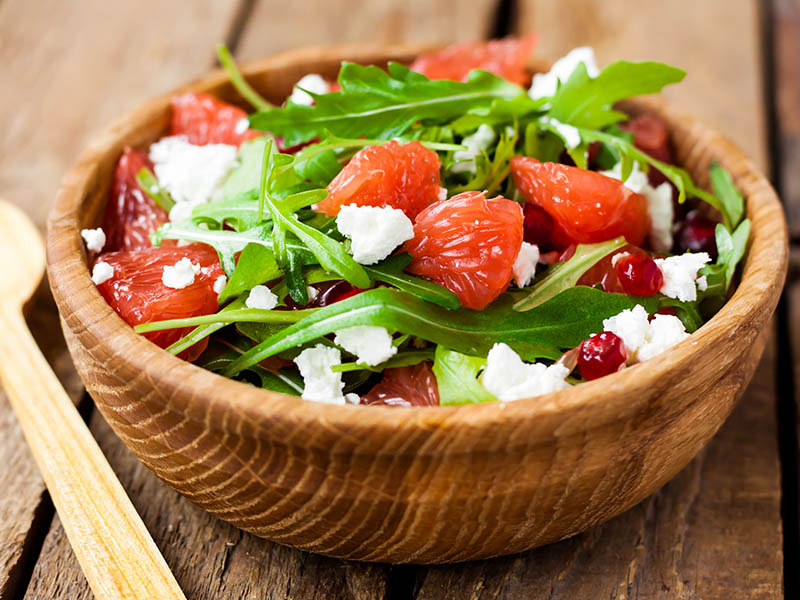
Although many recipes out there show you flexible ways to eat citrus fruits, there are three basic ways to help you enjoy your fruit to the fullest.
Eat Raw
Since most citrus fruits are easy to peel with raw hands, you have nothing to do with knives or forks. Just simply peel out the rind and pick out each separated segment to enjoy. You will truly feel the sweetness, sourness, and aroma of the fruit by eating it directly.
Squeeze For Juice
If you don’t enjoy eating the fibrous layer of citrus fruits, squeezing their juice is an alternative you can use to absorb nutrients from them. Simply cut your citrus fruits in halves and squeeze them. Such an easy way!
However, using this way, you have to notice that there will be less fiber in your consumption. Thus, it seems better for you to go with the raw way.
Peel For Dishes
Lastly, you can use peeled segments to zest your daily dishes, such as salad and yogurt. Peel your favorite citrus fruit, take out the pulp, and put them directly into your dish. Well done! Your dish is now full of flavor.
Which Citrus Fruit Do You Desire To Try?
As you can see, there are way more than just two or three citrus fruits in the world. Particularly, in this post, you have up to 25 citrus fruits on your list. So, after reading the article, which citrus fruit do you desire to try best? Comment below to share your interest with the community!
Also, if my post has helped you out of your wonder, please feel free to like and share it with your friends. Together, you and I can spread the knowledge with the community. Thank you, and wish you all the best!







Amanda Collins
Founder and Senior Culinary Editor
Expertise
Culinary Arts and Management, Food Journalism and Critique, Recipe Development and Testing, Global Culinary Traditions, Sustainable Food Practices
Education
Institute of Culinary Education (ICE), New York, NY
Program: Diploma in Culinary Arts
Focus: Intensive hands-on training in culinary techniques, recipe development, and kitchen management, preparing students for professional roles in the culinary industry.
Monroe College, New Rochelle, NY
Program: Associate in Applied Science in Culinary Arts
Focus: Practical culinary skills, including cooking techniques, menu planning, and kitchen operations, with an emphasis on hands-on experience and industry standards.
Amanda Collins is a seasoned chef and food editor with a deep love for global flavors. Trained at the Institute of Culinary Education and Monroe College, and with over 15 years in the culinary field, Amanda has refined her skills in kitchens worldwide. Her background in food studies gives her a unique ability to share both recipes and the cultural stories that shape them.
As senior culinary editor at thebreslin.com, Amanda’s work brings authentic dishes to life, inviting readers to explore new flavors and techniques from around the globe. Her approachable style makes it easy for anyone to bring a bit of the world’s cuisine into their kitchen.